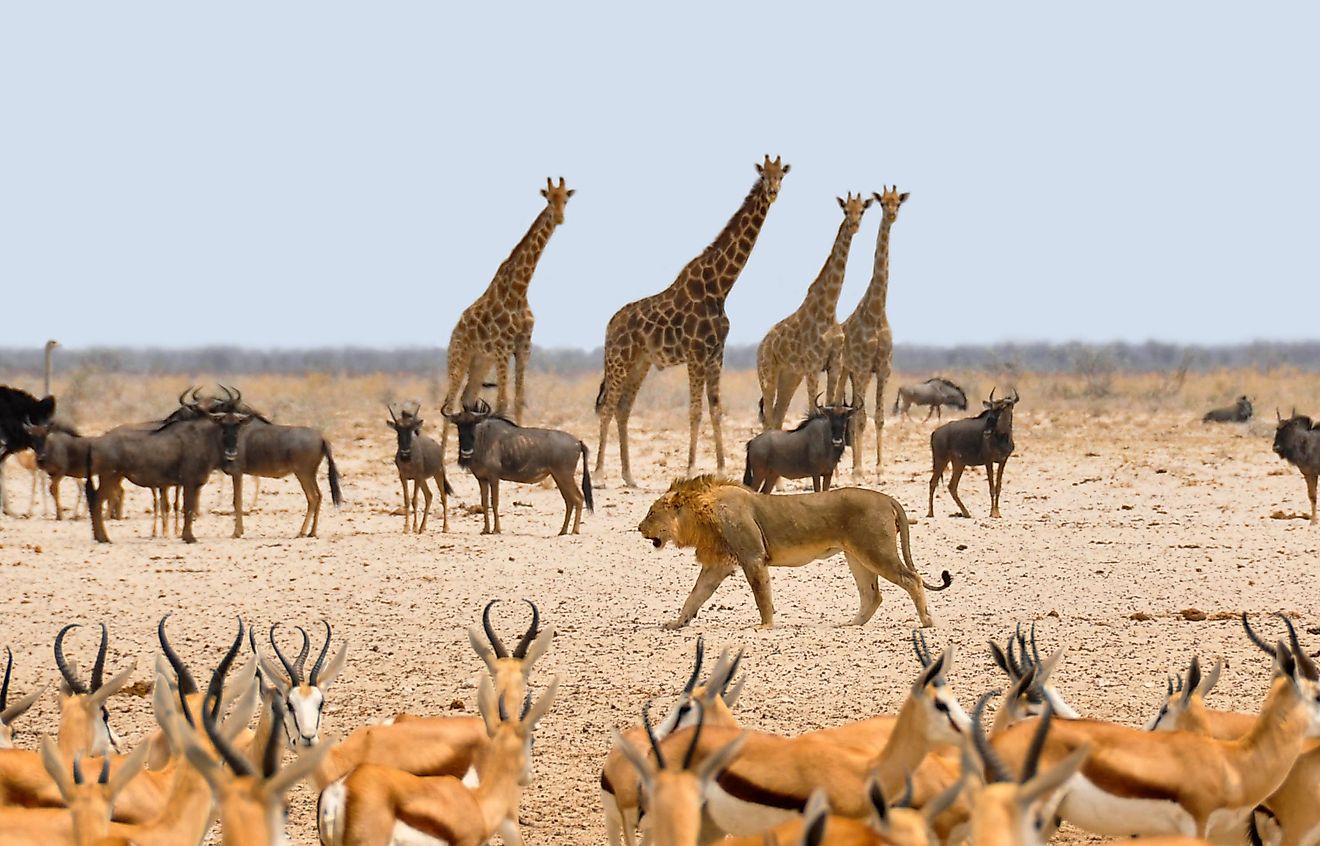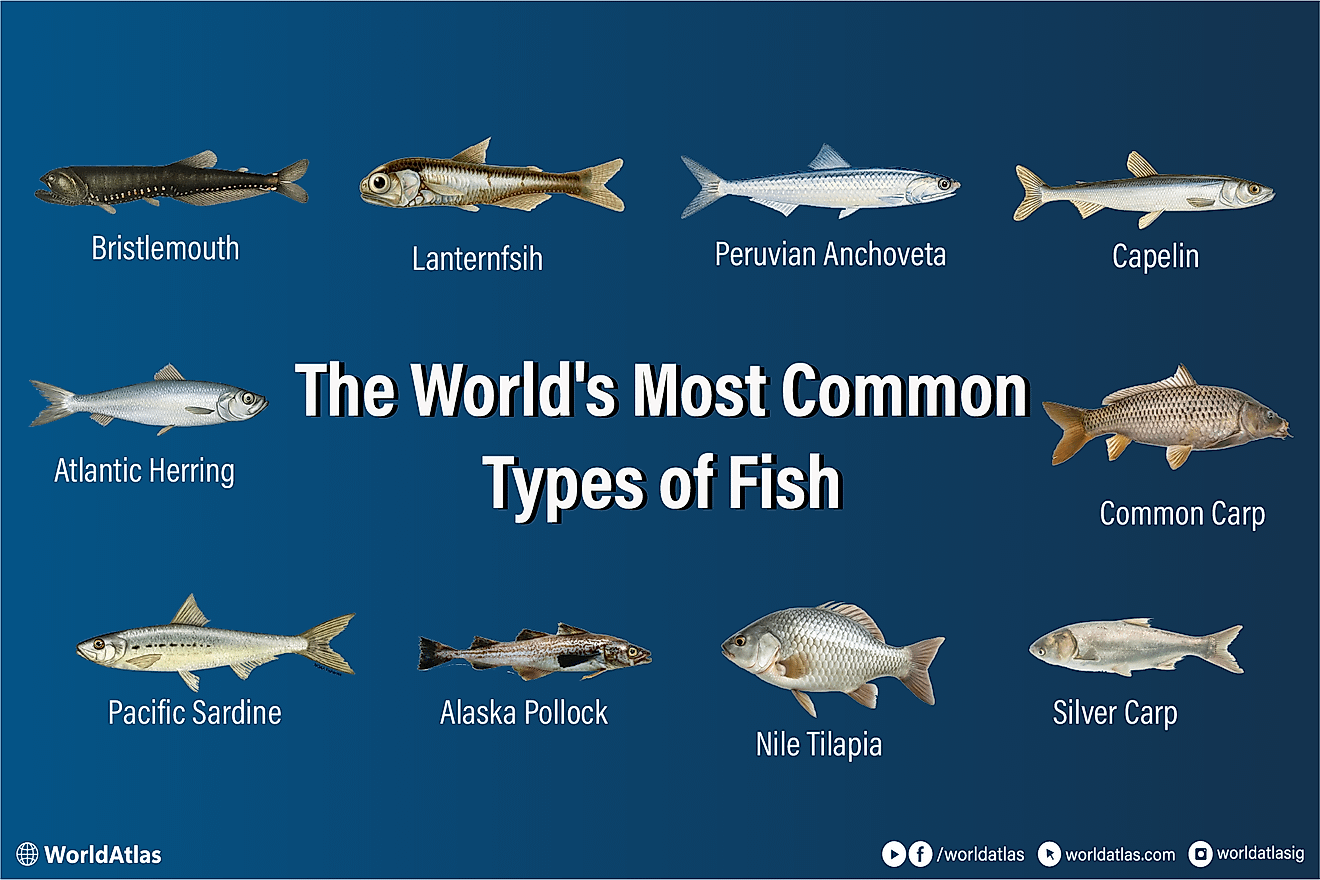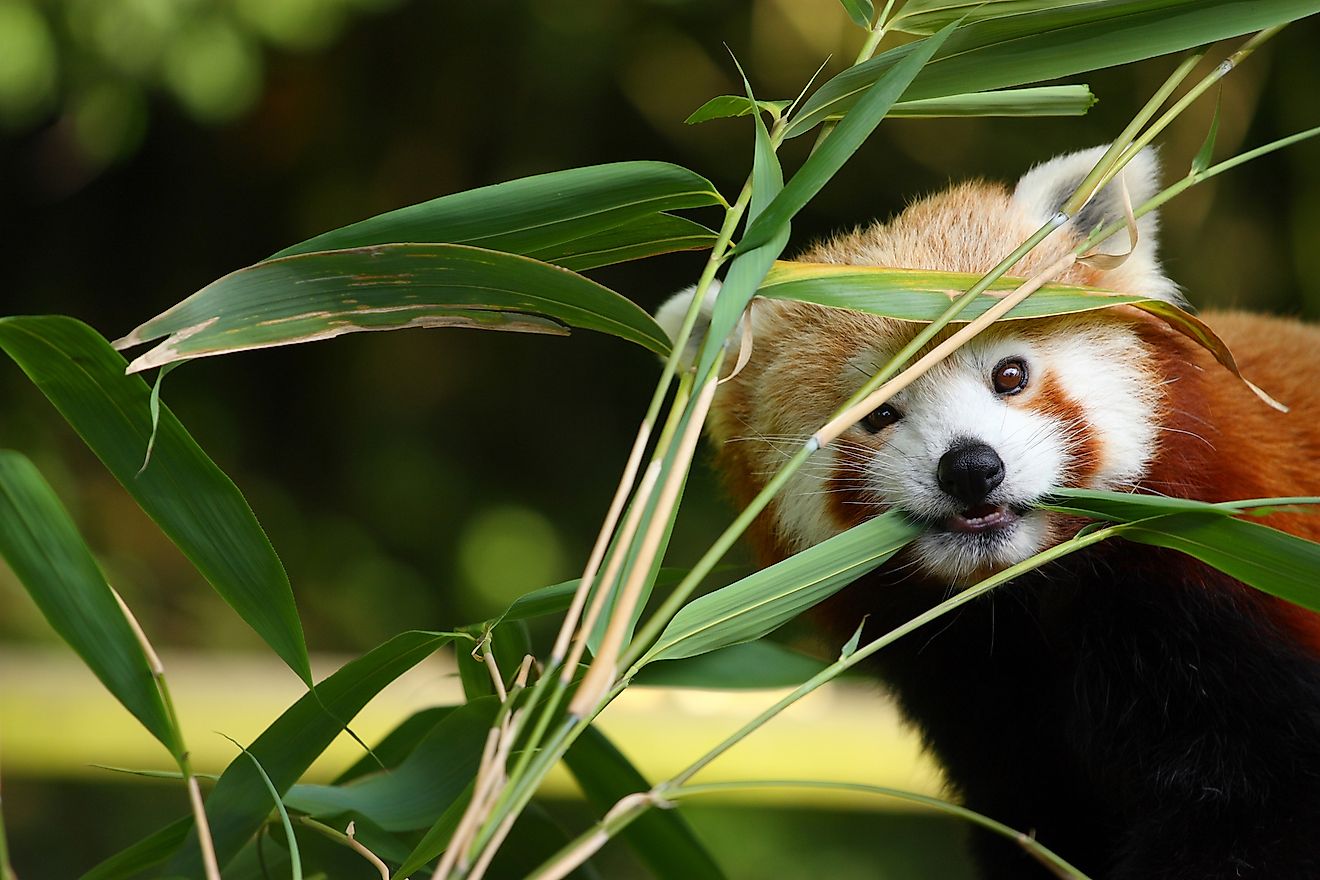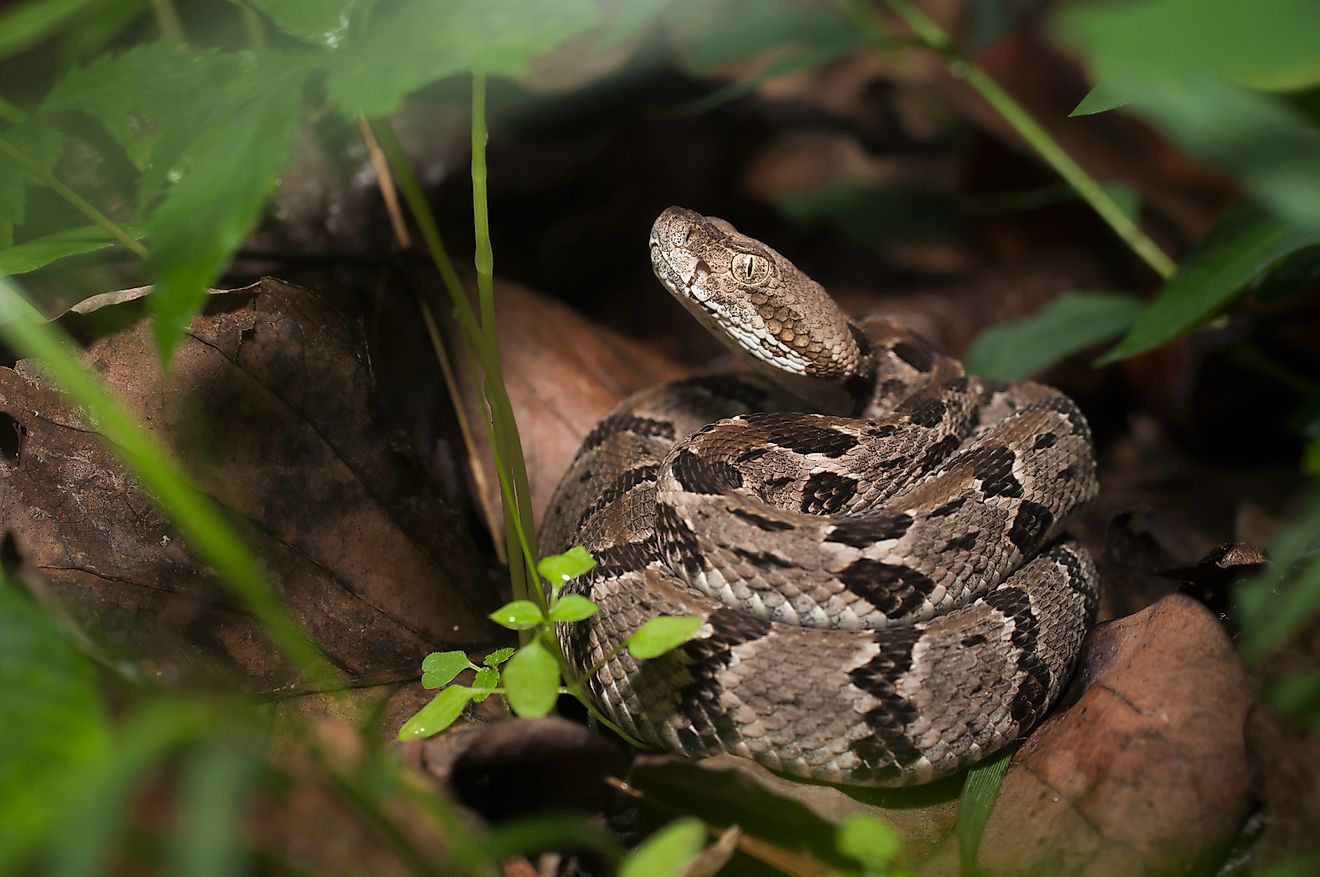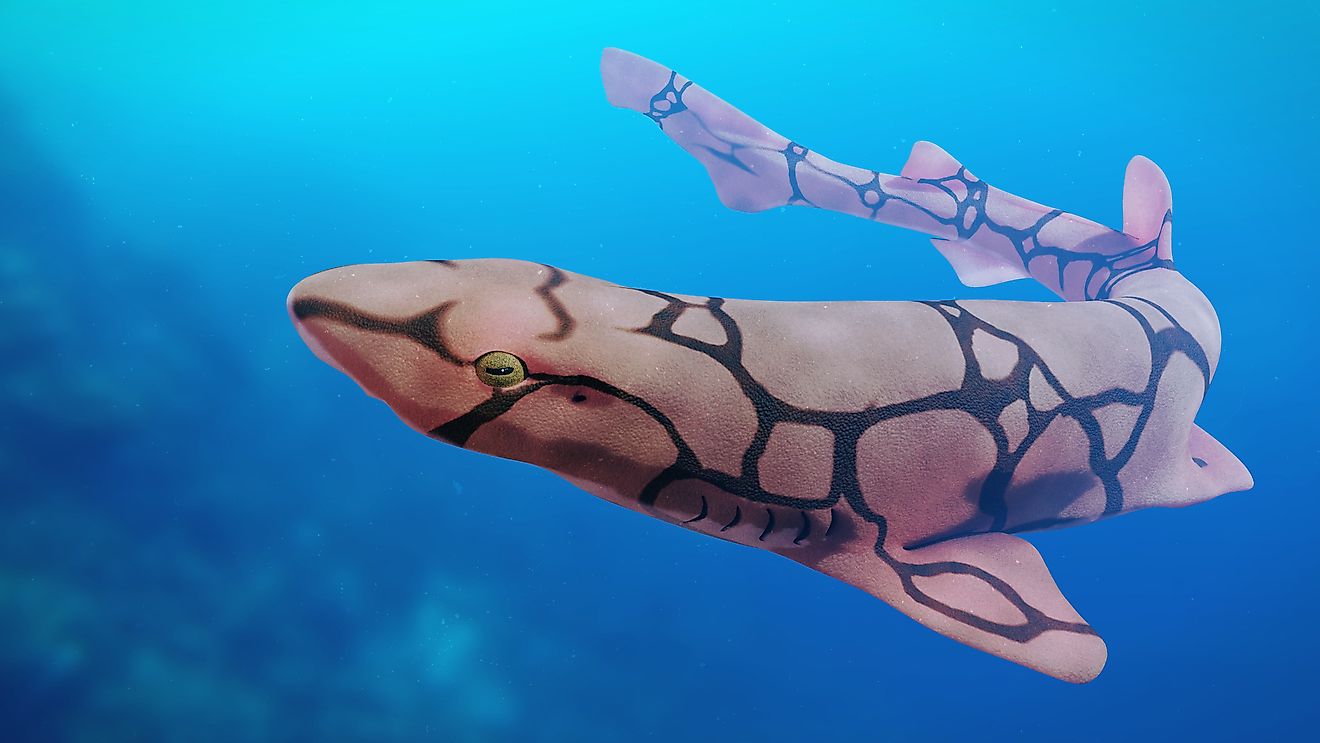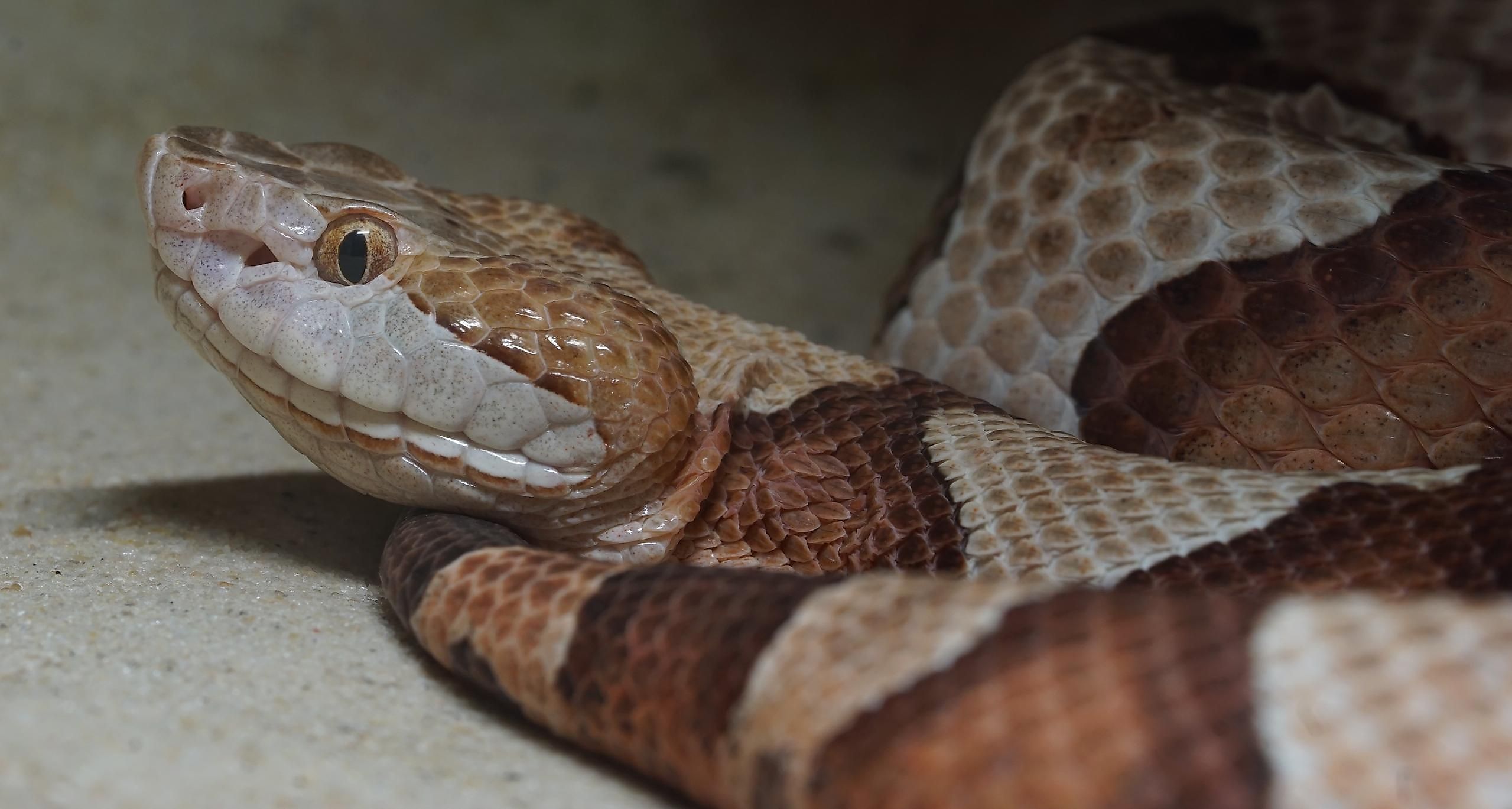
10 Facts About Copperhead Snakes
Coiled beneath a fallen log in the Appalachian foothills, a copperhead snake lies motionless, its bronze-hued scales catching dappled sunlight. This master of camouflage represents one of North America's most misunderstood predators—feared yet fascinating, common yet remarkable. The copperhead (Agkistrodon contortrix) may deliver more bites to humans than any other venomous snake in the United States, but its relatively mild venom and reluctant nature make fatal encounters extraordinarily rare.
From their distinctive hourglass patterns to their remarkable parenting strategies, these pit vipers have evolved sophisticated survival mechanisms that have allowed them to thrive across diverse landscapes for millions of years. Here are ten compelling facts about these bronze beauties that reveal why they deserve our respect rather than our fear.
Striking Features
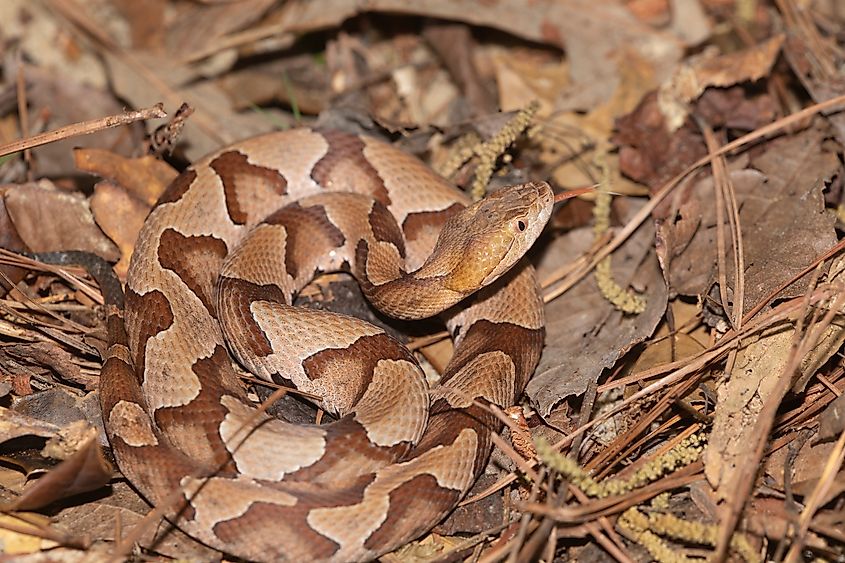
The copperhead's most striking feature gives the species its common name: a broad, triangular head painted in brilliant copper-red hues that seem to glow in filtered forest light. This distinctive coloration serves as both camouflage among autumn leaves and a warning to potential threats. The copper crown is complemented by golden-orange to reddish-brown eyes with vertical pupils that can dilate dramatically in low light conditions, giving these serpents an almost otherworldly appearance when encountered at dusk.
Nature's Heat-Seeking Technology
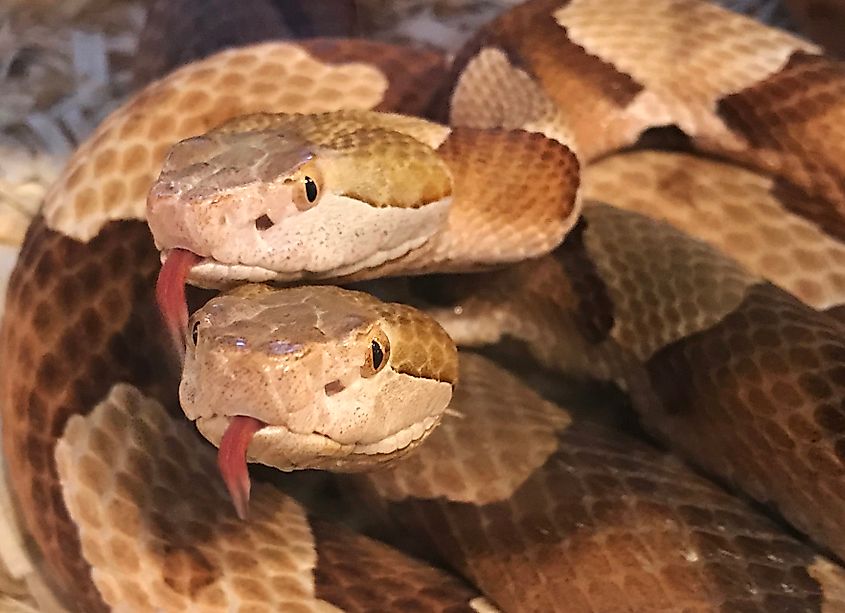
Between their eyes and nostrils lie small, inconspicuous pits that house one of nature's most sophisticated sensory organs. These heat-detecting organs can sense temperature differences as small as 0.003°C, allowing copperheads to track warm-blooded prey in complete darkness. This biological infrared technology is so precise that a copperhead can detect a mouse's body heat from over a foot away, making them formidable nocturnal hunters.
3. Built for Ambush
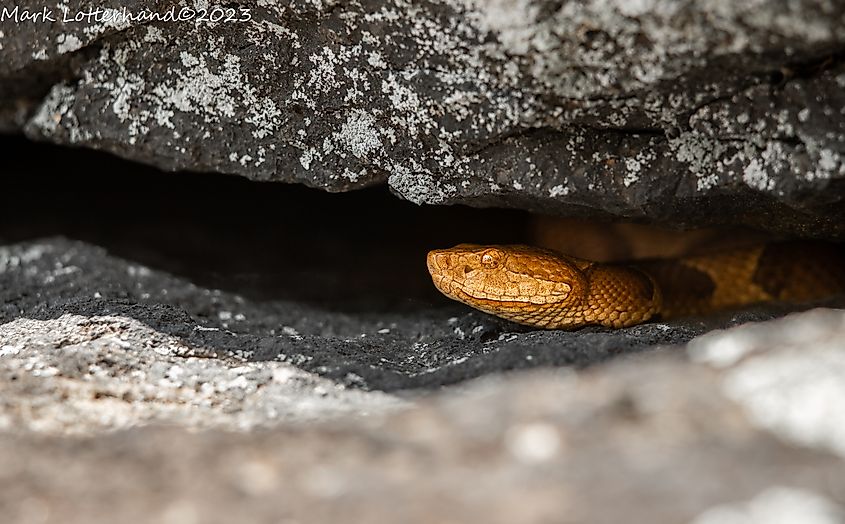
Adult copperheads typically measure 24 to 36 inches in length, with females growing slightly longer than males, though males compensate with proportionally longer tails. Their bodies are robust and muscular, perfectly designed for their patient hunting style. This medium size strikes an optimal balance—large enough to take substantial prey, yet small enough to remain hidden among forest debris and leaf litter.
4. Living Hourglass Patterns
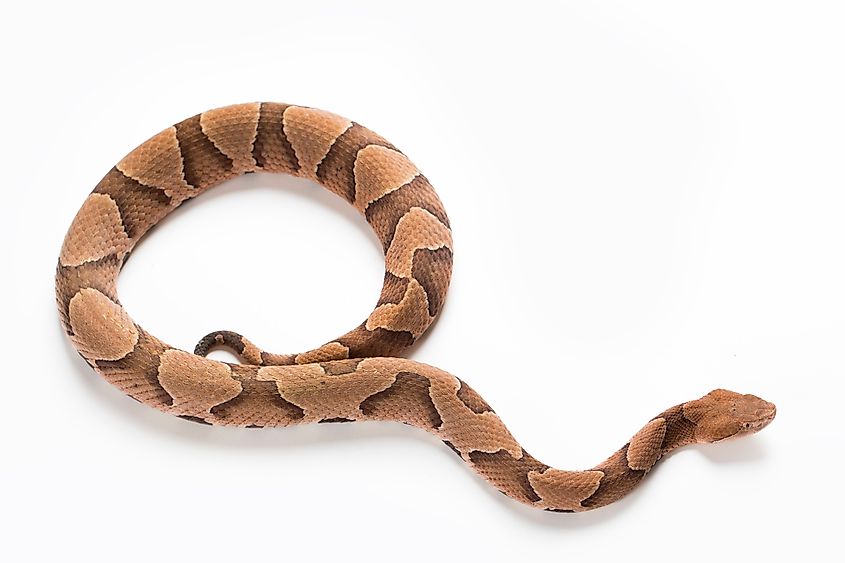
The copperhead's most diagnostic feature is its distinctive dorsal pattern of hourglass or "Hershey's Kiss" shapes that march down the snake's back. These saddle-like markings range from deep reddish-brown to chocolate brown on top, fading to pale pink or tan on the sides. The pattern narrows toward the spine, creating the characteristic hourglass silhouette. Remarkably, the copperhead is the only North American snake with this exact pattern, making identification straightforward for those who know what to look for.
Young copperheads sport a more subdued color palette, with gray-brown bodies and the same hourglass pattern, but they carry a secret weapon: a bright sulfur-yellow or green tail tip that they wiggle like a caterpillar to lure curious frogs and lizards within striking distance.
5. From New England to Mexico
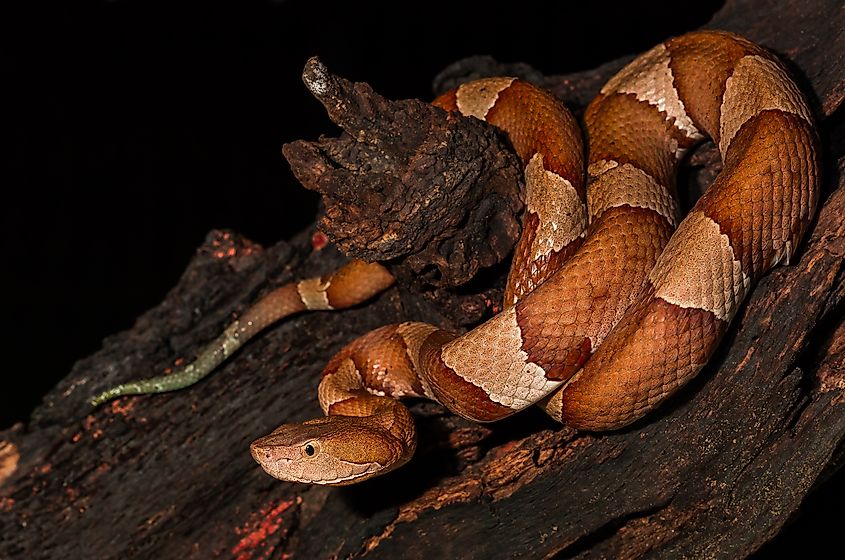
Copperheads boast one of the largest ranges of any North American venomous snake, stretching from southern New England south to northern Mexico and west to Nebraska and Texas. Five distinct subspecies have evolved to match their local environments, from the broad-banded copperheads of Texas to the northern copperheads of the Appalachian Mountains. This remarkable adaptability has allowed them to colonize diverse habitats, from rocky hillsides and deciduous forests to suburban gardens and urban parks.
6. Creatures of Habit
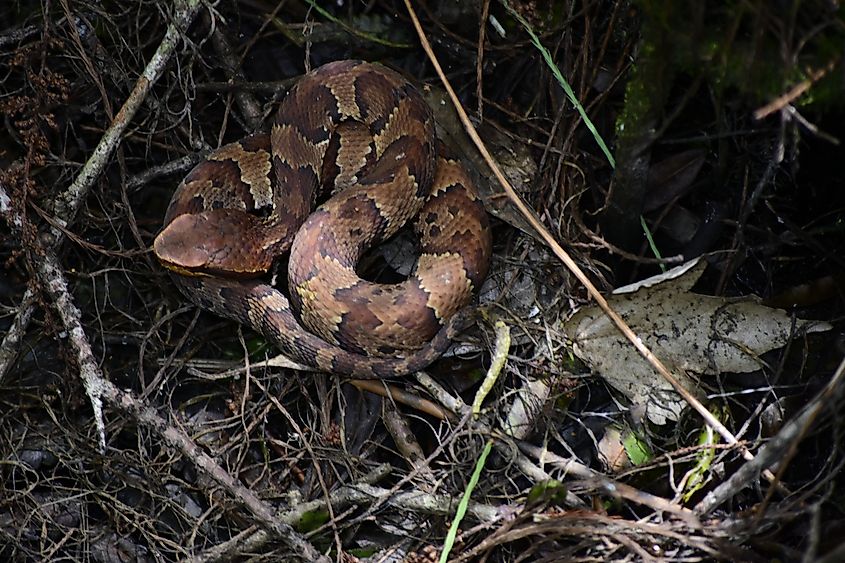
Unlike many solitary serpents, copperheads display surprisingly social behavior, particularly during hibernation. Each autumn, dozens of individuals may gather in the same rocky den, sometimes sharing space with timber rattlesnakes, black rat snakes, and other species. These communal hibernacula become annual meeting places, with the same snakes returning year after year, suggesting a level of site fidelity and social structure that scientists are only beginning to understand.
Their seasonal behavior follows predictable patterns: active hunting during cool spring and fall days, switching to nocturnal activity during summer's heat, and gathering for winter dormancy in rocky crevices or abandoned burrows.
7. The Art of Patience
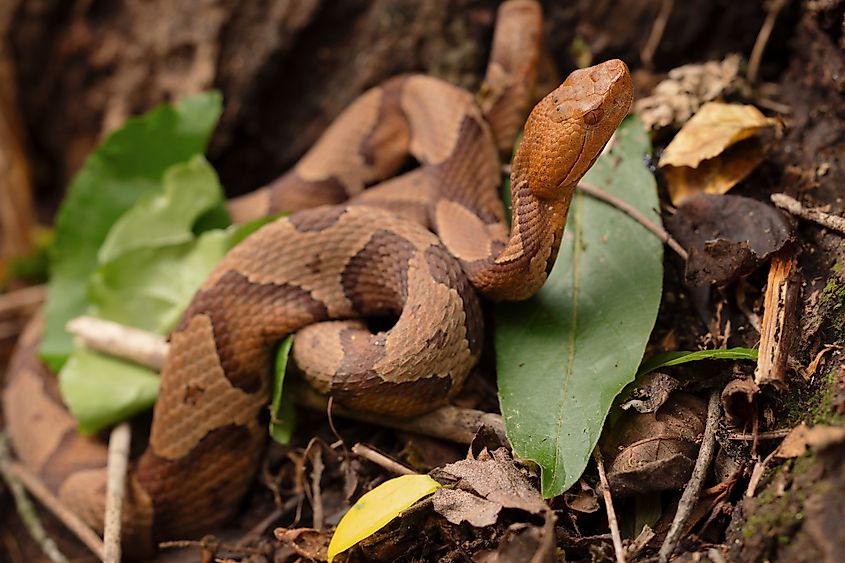
Copperheads are ambush predators par excellence, capable of remaining motionless for hours while waiting for prey to wander within striking distance. When hunting larger animals like mice or small birds, they employ a "bite and release" strategy, injecting venom and then tracking their victim as it weakens. Their highly flexible, hinged jaws allow them to swallow prey considerably larger than their head diameter.
Remarkably efficient in their energy use, adult copperheads may eat only 10 to 12 times per year, spending the rest of their time conserving energy and avoiding predators.
8. Masters of Deception
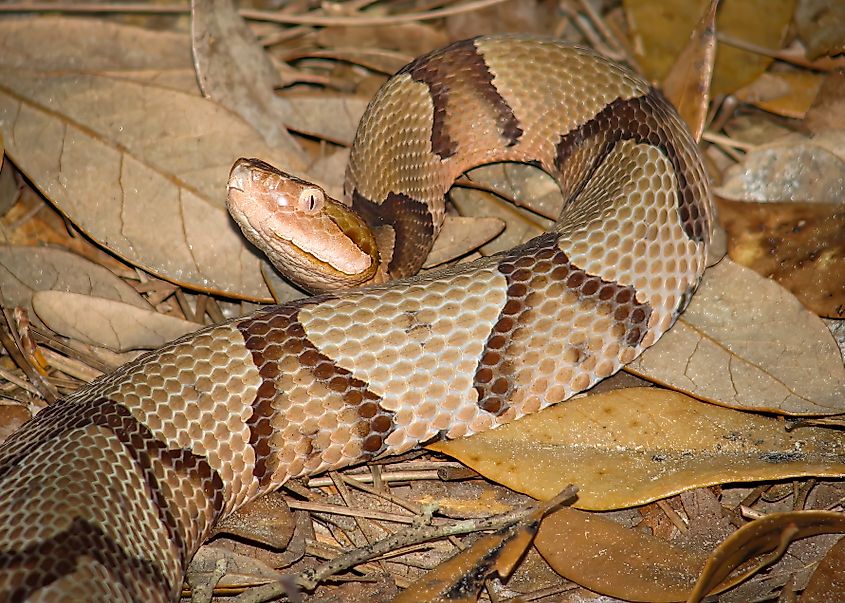
Juvenile copperheads employ one of nature's most clever hunting strategies: caudal luring. Young snakes position themselves motionless except for their bright yellow tail tips, which they wiggle in a convincing imitation of a caterpillar or grub. Hungry frogs, lizards, and small birds approach the apparent easy meal, only to find themselves within striking distance of a perfectly camouflaged predator armed with potent venom.
9. Love and Combat
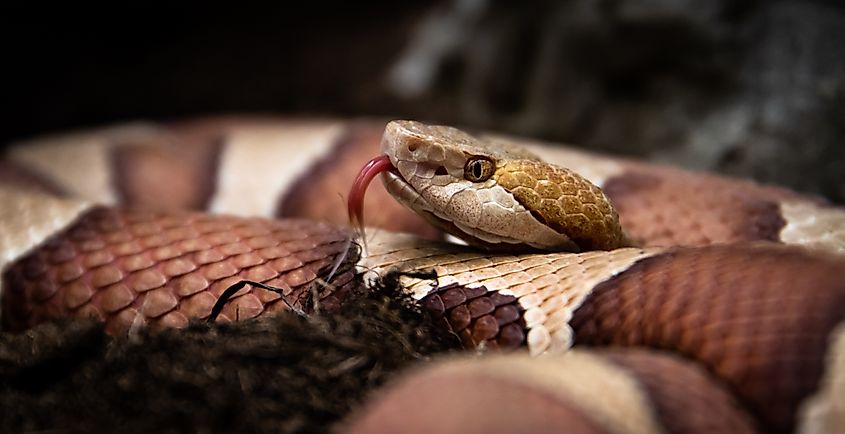
Copperhead courtship involves dramatic combat rituals that would make any gladiator proud. During breeding season (February through May and again in late summer), males engage in spectacular "combat dances," rearing up and attempting to push each other to the ground in tests of strength and endurance. The victor earns the right to court nearby females, who have their own standards—they often refuse to mate with males unwilling to fight for their attention.
Perhaps most remarkably, female copperheads can store sperm for months, delaying fertilization until conditions are optimal for offspring survival, demonstrating reproductive sophistication that challenges assumptions about "primitive" reptilian behavior.
10. Live Birth Champions
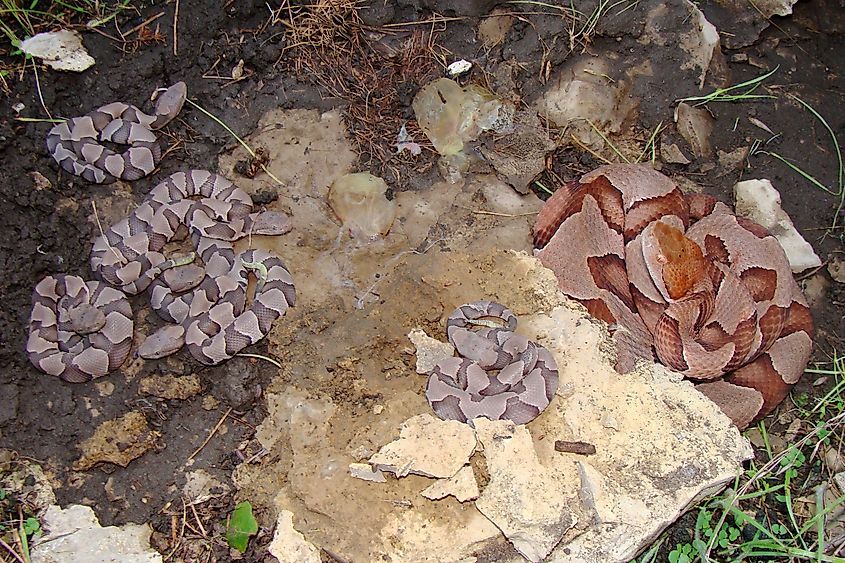
Copperheads belong to a select group of snakes that give birth to live young rather than laying eggs. After a gestation period of approximately seven months, females deliver between 4 and 18 fully formed babies, each measuring 8 to 10 inches long and equipped with the same potent venom as adults. This ovoviviparous reproduction strategy—where eggs develop inside the mother's body—provides crucial protection for developing embryos in temperate climates where temperature fluctuations could prove fatal to buried eggs.
Newborn copperheads receive no parental care, emerging into the world as perfect miniature predators, complete with heat-sensing abilities, venomous fangs, and an instinctive understanding of their role in the ecosystem.
The next time you encounter a copperhead in the wild, remember that you're observing a master of adaptation whose ancestors survived the extinction of the dinosaurs. These serpents play crucial roles in controlling rodent populations and maintaining ecosystem balance. While caution and respect are always warranted around venomous snakes, understanding their behavior and biology transforms fear into fascination, revealing the remarkable complexity of one of North America's most successful predators.


